
Features
Business
Drainage Management Systems
Environment
Editor’s picks: The top drainage stories for 2020
December 18, 2020 By Bree Rody
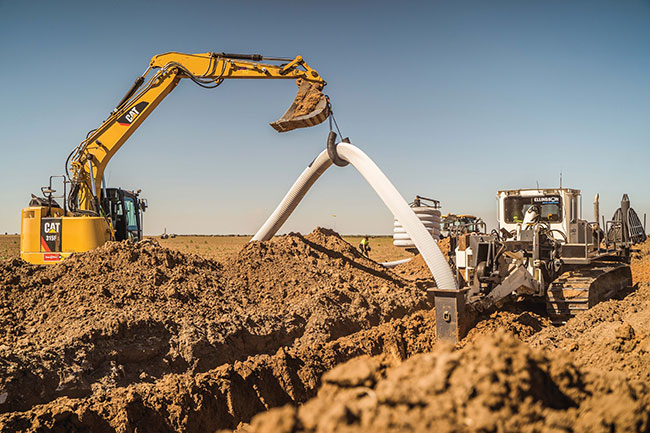 Agriculture is considered an essential service and is exempt from restrictions, so many drainage projects in agriculture are continuing as normal. Photos courtesy of Ellingson Companies.
Agriculture is considered an essential service and is exempt from restrictions, so many drainage projects in agriculture are continuing as normal. Photos courtesy of Ellingson Companies. ‘Tis the season for year-end round-ups. And while the challenges of 2020 forced many industries into a cycle of “panic, pause, pivot,” the drainage industry soldiered on. Despite a few challenges due to shutdowns, drainage has continued to evolve at a consistent pace. In many areas, a dry fall and a late winter means business has been healthy during the final lap of the year. And new research projects and installations around the continent prove that the age-old practice of drainage remains innovative.
Here’s some of our favourite stories from 2020.
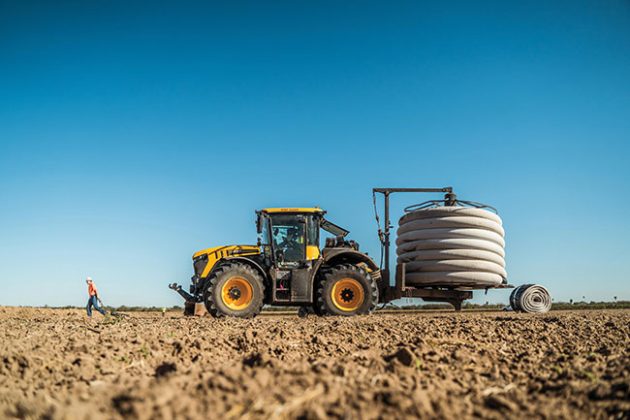
Depending on the location, there are variations between regional government guidelines for sheltering in place and the closing of non-essential businesses and this can dictate what work is being allowed. Photo courtesy of Ellingson Companies.
COVID-19 and drainage | Tom Walker
While the novel coronavirus affected all industries – and still does to this day – the effects on agriculture and drainage are less obvious. Agricultural work tends to be more solitary by nature and lends itself to social distancing quite well. Nevertheless, throughout North America, work continued in what one might call “business as unusual.” Businesses and organizations across the continent share how regulations affected their livelihoods.
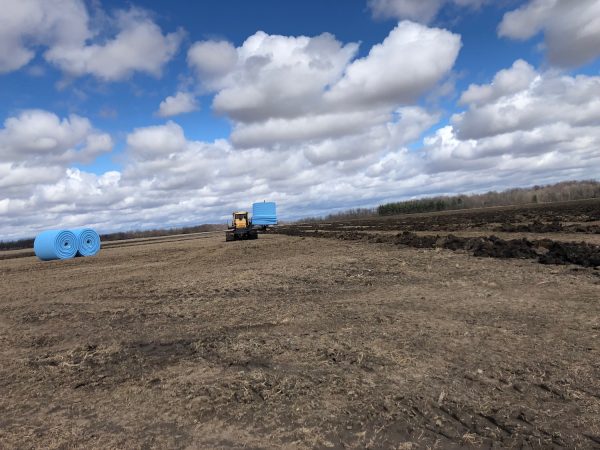
Tony Kime presented an offer to the farmer group: if anyone wanted to run a close-spacing trial, Bluewater Pipe would donate the tile. In quick succession, three farmers stepped forward to participate. Photos courtesy of Eric Dietrich.
Narrower spacing: How tight is too tight for tile drainage spacing? | Madeleine Baerg
In Southern Ontario, the vast majority of its farming acres are tile trained. But Madeleine Baerg’s feature asks a key question: how close is too close? The spacing of drainage tile can affect the production of crops. It’s most common these days to install 15-foot spaced drainage in fields with heavy clay soil, like those in Southern Ontario. But what still isn’t fully understood is the economic return of close spacing. Within the next several years, there may be more known about the relationship between spacing and ROI.
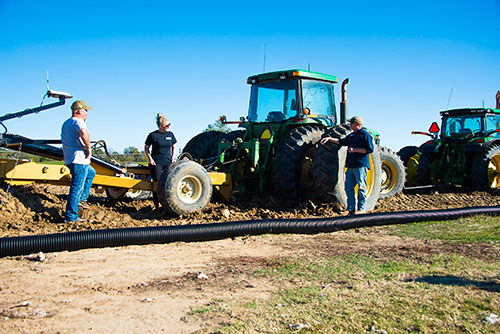
Darrin Dodds, Darla Huff, and Jason Krutz discuss installation of tile drainage as preparations are made to install the main line at Mississippi State’s R.R. Foil Plant Science Research Center. (Photo by Dominique Belcher)
Advanced Drainage Systems sets up shop at Mississippi State | Bree Rody
What seemed like an everyday story about a research project turned into a curious find. Tile drainage is less common in Mississippi and the broader mid-south, because of the nature of the soil there. But MSU’s Darrin Dodds says growers in the area have been increasingly curious. Advanced Drainage Systems’ partnership with MSU will see just how good of a fit pattern drain tile is in the region. Factors will include water quality, effects on crops and ROI. It’s the first major research project on drainage for the university, but it could be an exciting indication of things to come.
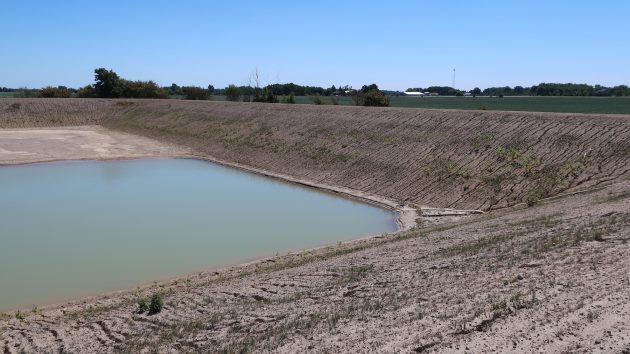
One of the benefits of a drainage water recycling system is having a reservoir of water to irrigate with during the growing season to improve crop yields. Photo courtesy of Ehsan Ghane.
Building the next generation of water management systems | Stephanie Gordon
Drainage tile is a practice that dates back hundreds of years. And while some practices remain tested and true over the years, the industry is also always looking for ways to innovate and create systems that work smarter in the future. At the Michigan Land Improvement Contractors Association’s recent September Field Day, the topic on everyone’s mind was drainage water recycling, a relatively new practice. Excess water from subsurface drainage systems is captured and stored in an on-site reservoir. This piece covers the advantages and potential challenges associated with the practice.
Print this page